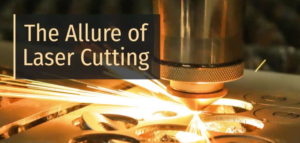Machining Specialty Features for Steerable Medical Devices
The ability to steer a small medical device is a crucial capability for many minimally invasive interventional and diagnostic uses. In conjunction with the physician’s skills, it is what allows a surgeon to, for example, steer a catheter safety through challenging anatomies, such as small arteries and veins.
But who would ever guess that a small precision metal component called a pull ring plays such an important role in steerable medical device applications?
Role of Pull Rings for Catheters and Sheaths
Steerability in catheters and similar medical devices is the ability to turn or rotate the proximal section (handle) of the device to achieve the exact same movement on the distal end of the device. The movement is produced through the transfer of torque along the shaft of the device.
Naturally, there are numerous factors that are vital to device steering and performance, such as the choice of material for the shaft, its stiffness, and how it is engineered. For example, some catheters are made with a composite shaft having a design that transitions from more rigid at the proximal end to much more supple at the distal end.
Pull rings, which are often found in a Swiss machine shop, allow for very precise control of deflection at the very tip of catheters and sheaths. As you might guess from the name, the pull ring is what pulls the catheter or sheath tip in one direction or another.
Basic Pull Ring Design and Construction
With pull rings for catheters or sheathes, the pull ring is assembled at the tip of the device and embedded under an outer layer of polymer. Pull wires or cables are welded to the pull ring and run down the length of the device, connecting the pull ring to a control lever in the handle. There is also a braid or coil that creates the lumen, which goes over the guidewire.
When the wires/cables are pulled by actuating the control lever, they pull the ring and deflect the device tip accordingly, to help guide it through the proper pathway. This deflection at the tip is independent of the device steering.
Depending on the design, there are different types of devices that vary in their deflection capabilities. For example:
- Bidirectional catheters have a tip that can be pulled in two opposing directions. With two pull wires connected to the distal pull ring, these devices can be steered forwards and backwards and useful for controlled movement and placement of the distal tip.
- Four-way deflectable catheters can be pulled in four directions using a handle connected via four wires to the distal pull ring. These devices are commonly used in ultrasound imaging systems to provide images from different angles.
- Omnidirectional catheters are four-way deflectable catheters that are controlled via a robotic device and allow tip orientation in any direction using one or more pull wires simultaneously.
Catheters can even have two deflection points by using two pull rings placed at two different points on the distal end of the catheter, with two to four wires attached to the rings.
Pull Rings Manufactured from 304 Grade Stainless Steel
Pull rings are usually very simple rings made from tubes cut to length. Often, the tubing is made of 304 grade stainless steel (also known as A2 stainless steel). This material is frequently used for minimally invasive medical devices because, in general, it is:
- Readily available
- High strength
- Corrosion resistant
- Cost effective
However, when pull rings require specialty features or must be made from materials other than SS304, precision CNC Swiss high precision machining is often the preferred method of production.
Using Swiss High Precision Machining for Different Features and Materials
When certain features are designed into pull rings, it may be easier and more cost effective to machine the parts from solid bar stock using a CNC Swiss-style lathe. For example, the Swiss method might be used when a manufacturer wants its pull rings to have:
- Grooves to accommodate the pull wires or cables
- Chamfers or custom IDs or ODs not readily available in standard tubing
- Slots that help to improve polymer flow
For instance, the addition of slots to a pull ring can aid the process of embedding the ring in a layer of medical grade Pebax® extruded tube topped with FEP (fluorinated ethylene propylene) heat-shrink tubing. This forms a protective covering that resists heat, corrosion, and moisture.
In addition, when pull rings will be made from a material that is not readily available in standard tube sizes, precision CNC Swiss machining may be required to make the parts from bar stock.
For example, while 304 grade stainless steel is corrosion resistant, it is not designed for long-term implantation. In addition, SS304 cannot be used in steerable devices that need to be compatible with magnetic resonance imaging (MRI) scanning.
In these cases, manufacturers may opt to have their pull rings machined from other high-strength materials that have better corrosion resistance or that are MRI-compatible, such as titanium, MP35N®, Elgiloy®, L605, Conichrome®, 35N LT®, L605, 316LVM, or Nitinol (NiTi).
All the Advantages of Swiss CNC Metal Machining
Finally, for the manufacture of small machined parts such as pull rings and other medical device components, CNC Swiss machining provides both the speed and the tight tolerances that the industry often requires. With multi-axis configurations, the latest parts in Swiss machine shops can perform turning, milling, and back turning on a single machine, eliminating secondary operations.
To explore whether precision CNC Swiss machining is the best method for your application, download our free guide Swiss Machine FAQs to learn more about all of its advantages and capabilities.






